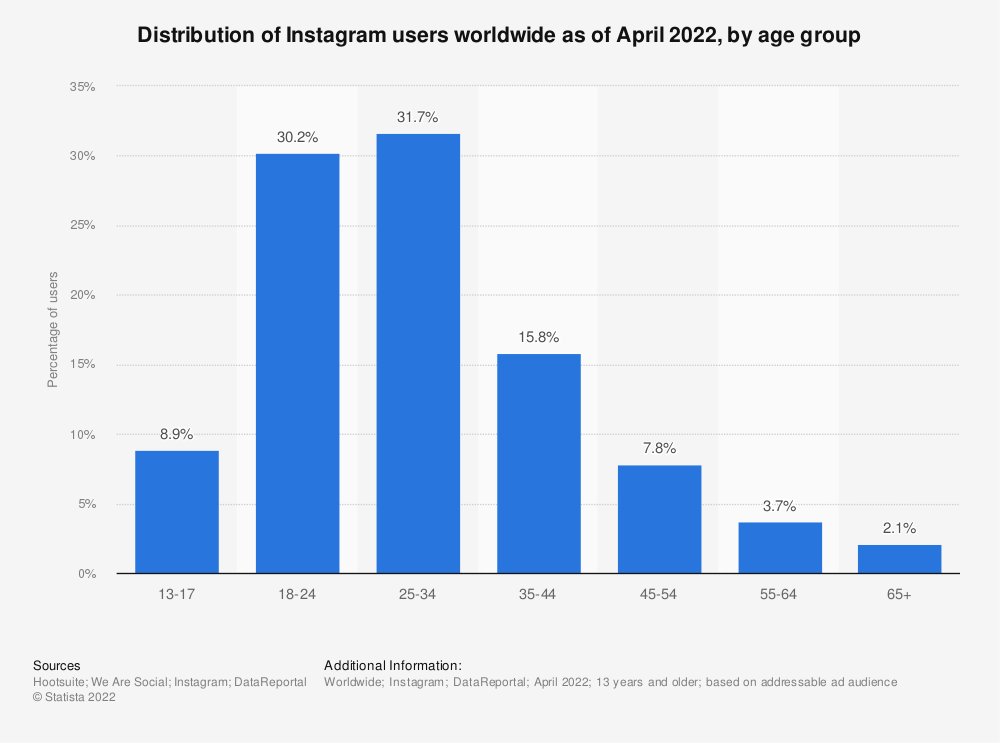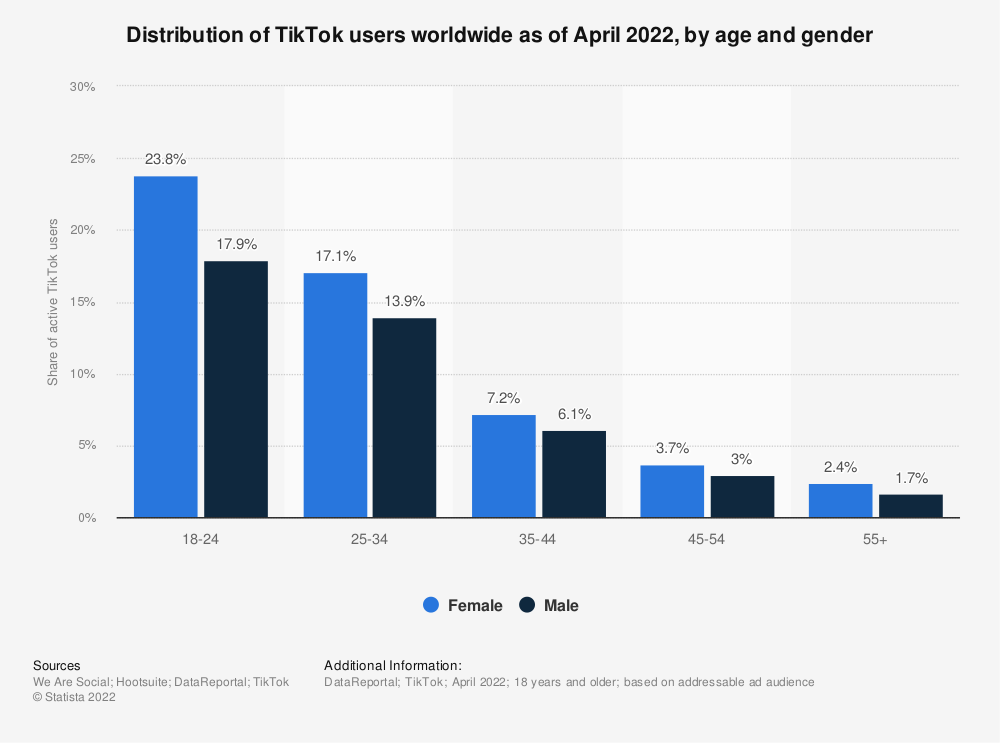When Instagram launched Reels in 2020, one question arose for many marketers and content creators: Should I start focusing on this instead of TikTok?
It’s obvious that Reels was designed to directly compete with TikTok, so much so that Kylie Jenner and other high-profile Instagram influencers recently expressed concern that the company is pushing the Reels feature too aggressively in an attempt to copy the short-form giant’s success.
But exactly how similar is Reels to TikTok? Today, we’ll take a look at the functionality of each platform, analyzing the ways they differ, and making a recommendation for which platform to prioritize in your own content strategy.
First, the differences.
Differences Between Instagram Reels and TikTok
Instagram Reels and TikTok may be built with the same end-goal in mind—short-form video content creation and consumption—but they’re not identical. Here are a few of the key differences to consider as you evaluate both options for your brand.
1. Video Length
Video length is the first difference you may notice when you begin making a video on the two platforms. TikTok’s maximum video length was recently bumped to 10 minutes, while Reels currently maxes out at 90 seconds. This is a critical difference and will affect the flow of content on each platform. Reels often has a slightly more focused scope and faster pace than TikTok videos, simply because creators have much less time available. On TikTok, creators can dive deeper into their topics or create more complex stories.
While this difference alone is unlikely to push you directly to one platform over the other, it’s important to know the limitations before you begin planning your content. This difference also means that you can’t post the exact same content on both platforms if it’s longer than 90 seconds. To transfer a three-minute TikTok to Reels, you’ll have to cut down the video to fit into the 90-second timeframe.
2. Access to Music/Sounds
The second key difference is creators’ access to music or sounds to enhance their videos. As you probably know if you’ve spent any time on either platform, audio is a major part of the experience. On Reels, however, many accounts (especially business accounts) are currently locked out of the Instagram music library, meaning that they can’t access certain audio files to add to their videos. Additionally, when you save a Reel to your photo library, the audio is left out. [Note: With Instagram, you can only save your own Reels, while on TikTok you can save anyone’s video if they’ve enabled that setting.]
For a platform that relies so heavily on audio to capitalize on trends and add another dimension to the video experience, Reels is lagging behind TikTok in this arena. Instagram is hoping to increase this functionality soon, but for now, TikTok is the better option for access to sound clips.
3. Demographics
Next, it’s important that we acknowledge that the demographics of the two platforms are slightly different.
According to Statista, here is the age breakdown for Instagram’s audience:

As you can see, the highest adoption rate skews slightly more towards the 25-34 age range, but still high in the 18-24 range.

As for TikTok, the data skews slightly younger. Its user base is largely made up of Gen Z and Millennials, although there are definitely users in older generations.
The takeaway here? If your audience is primarily made up of consumers in Gen X or above, you may want to focus more on Reels than TikTok. If your audience is primarily made up of Gen Z or Millennials, either platform is likely to work well.
4. Paid Ads
Instagram launched Reels ads in 2021, giving business the chance to use the feature in a new brand new way to reach targeted audiences. However, many brands are still utilizing the workaround of hiring a content creator to film branded content that serves the same function as an ad, except you’re relying on that person’s network to reach your audience rather than capitalizing on sponsored placements that align with your target keywords or demographics.
On TikTok, however, there are sponsored content options, which takes the benefits of working with creators in your niche up a notch. If you’re considering making branded content that you promote on one of these two platforms, TikTok is likely the winner.
5. Monetization
Finally, a question that is unlikely to affect brand accounts but is important nonetheless: How much can creators make on TikTok versus what they can make on Reels?
There was a time when Reels didn’t offer creators a monetization option at all, but in a strategized attempt to lure TikTok Creators onto its platform, Instagram recently launched the Reels Bonus Program to incentivize its most popular creators to monetize their content.
The TikTok Creator Fund allows users who are part of the fund to earn money in correlation with their content’s views. While there have been critiques about the fund not adequately compensating creators, it still beats Reels, which seems far more confusing in terms of how creators access the funds.
So, should I focus on Reels or TikTok for my brand’s content?
With all the above information in mind, our recommendation is simple: Make content for both platforms, and assess for yourself which one seems to be better over time.
Why? Well, for one thing, it’s too early to tell whether one platform will be the clear winner over time. For example, when Instagram came out with Stories and became a direct competitor for Snapchat, it took time for loyal Snapchat users to adopt Instagram’s copycat feature. The same process may happen here, but it’s too soon to know for sure.
Beyond that, your content might not be equally successful on the two platforms. Even if you post the exact same content in both places, it’s possible that one will excel over the other.
For example, TikTok’s algorithm may help your TikTok video go viral, or Instagram’s algorithm may feature your content on the “Explore” page. Or, you might quickly develop an audience on one platform over the other. You may also find that your target audience skews heavily towards one of the two platforms, indicating that you should probably prioritize that platform, too.
Consider too that you likely already have a following on Instagram, which may help the success of your Reels content. However, this is a double-edged sword because you may already have a content strategy for Instagram, too.
Since TikTok is a newer platform—and exists separately from anywhere else you post content—you may have more creative freedom to try something new and experiment with the look and feel of your content. On Instagram, if you’ve already been posting to the main feed and to Stories, you’ve established a look and feel that your audience may expect to see continue in your Reels content. This has the potential to stifle your creativity on Reels.
Finally, by creating content on both platforms, you can still pick one to focus on down the line (if you want). But, instead of putting all your eggs in one basket right at the start, by trying both, you’ll get a feel for how your brand aligns with each platform and which one is best for you and your audience. You’ll be able to make an informed decision rather than an impulse decision.
Beyond these recommendations, we’ll all just have to wait and see what happens over time. Who knows which platform will win in the end, but for now, both have promise. Try them out and let us know what you find!


